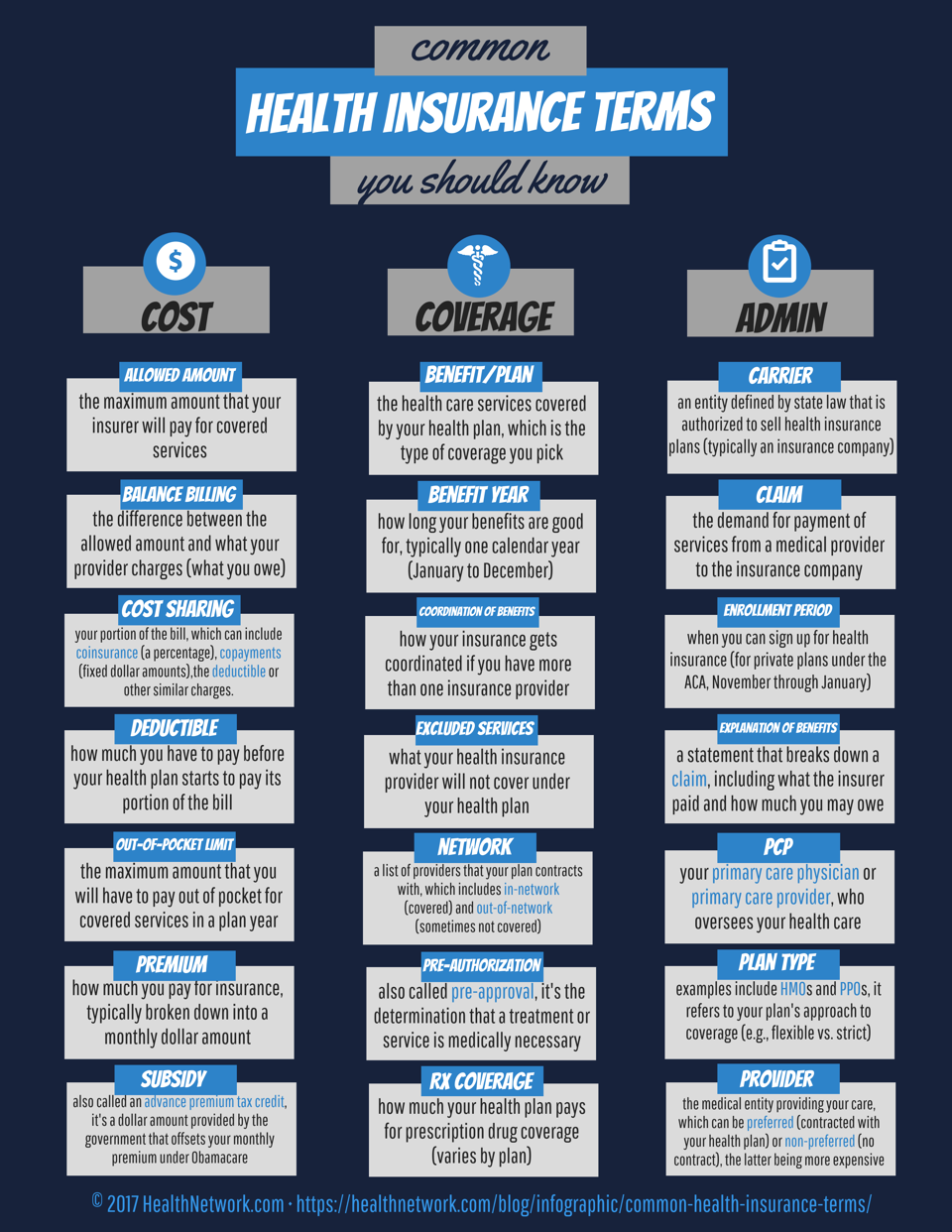This common Health Insurance terms you should now.
| Costs | Coverage | Admin |
|---|---|---|
| Allowed Amount The maximum amount that your insurer will pay for covered services. | Benefit / Plan The health care services covered by your health plan, which is the type of coverage you pick. | Carrier An entity defined by state law that is authorized to sell health insurance. |
| Balance Billing The difference between the allowed amount and what your provider charges (what you owe). | Benefit Year How long your benefits are good for, typically one calendar year (January to December). | Claim The demand for payment of services from a medical provider to the insurance company. |
| Cost Sharing Your portion of the bill, which can include coinsurance (a percentage), copayments (fixed dollar amounts),the deductible or other similar charges. | Coordination of Benefits How your insurance gets coordinated if you have more than one insurance provider. | Enrollment Period When you can sign up for health insurance (for private plans under the ACA, November through January). |
| Deductible How much you have to pay before your health plan starts to pay its portion of the bill. | Excluded Services What your health insurance provider will not cover under your health plan. | Explanation of Benefits A statement that breaks down a claim, including what the insurer paid and how much you may owe. |
| Out-of-Pocket Limit The maximum amount that you will have to pay out of pocket for covered services in a plan year. | Network A list of providers that your plan contracts with, which includes in-network (covered) and out-of-network (sometimes not covered). | PCP Your primary care physician or primary care provider, who oversees your health care. |
| Premium How much you pay for insurance, typically broken down into a monthly dollar amount. | Pre-Authorization Also called pre-approval, it’s the determination that a treatment or service is medically necessary. | Plan type Examples include HMOs and PPOs, it refers to your plan’s approach to coverage (e.g., flexible vs. strict). |
| Subsidy Also called an advance premium tax credit, it’s a dollar amount provided by the government that offsets your monthly premium under Obamacare. | Rx coverage How much your health plan pays for prescription drug coverage (varies by plan). | Provider The medical entity providing your care, which can be preferred (contracted with your health plan) or non-preferred (no contract), the latter being more expensive. |
